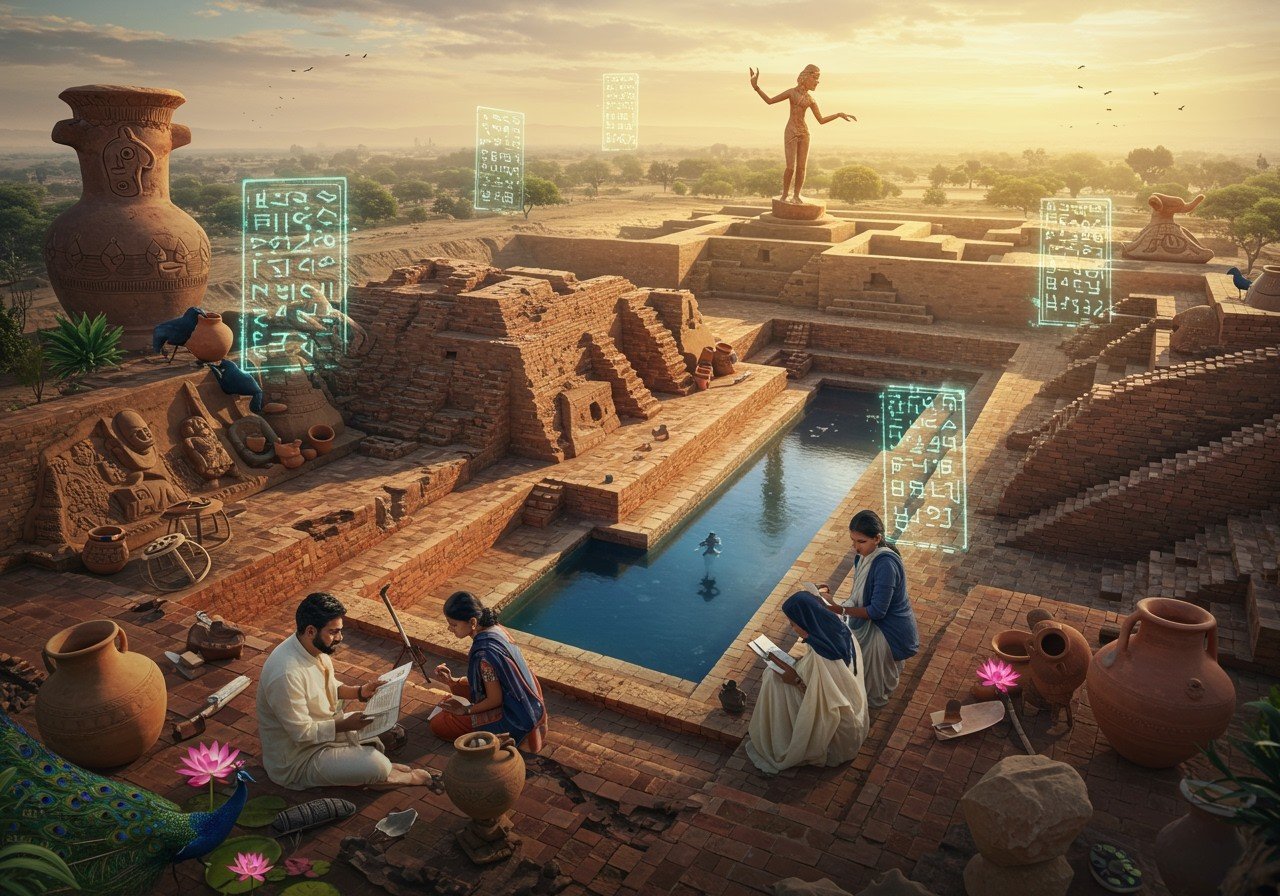
The Indus Valley Civilization (IVC), a beacon of ancient innovation (3300-1300 BCE), thrived in northwest India and present-day Pakistan. Renowned for its advanced urban planning, sophisticated architecture, and complex social structures, the IVC continues to captivate historians and archaeologists. This article delves into how the IVC’s legacy is preserved and shared through translations in Hindi and other Indian languages, emphasizing the vital role language plays in cultural understanding and education.
The Indus Valley Civilization in Hindi
Hindi, as one of India’s most spoken languages, serves as a crucial bridge to understanding the IVC. A wealth of research materials, books, and articles translated into Hindi makes this ancient civilization accessible to a wider audience. Indian historians and archaeologists have diligently worked to translate ancient texts and research papers, ensuring that the IVC’s story reaches far and wide.
The Significance of Hindi Translations
- Democratizing Knowledge: Translations break down language barriers, allowing Hindi speakers to engage with complex historical information about the IVC, fostering a deeper appreciation for India’s rich past. This accessibility empowers individuals to connect with their heritage on a personal level.
- Preserving Cultural Heritage: Hindi translations play a vital role in safeguarding the IVC’s legacy. By making information readily available in a widely spoken language, these translations ensure that the civilization’s story continues to be passed down through generations, enriching India’s cultural fabric. They also help in promoting cultural tourism.
- Educational Empowerment: Educational institutions across India utilize Hindi resources to teach students about the IVC. This integration of historical knowledge into the curriculum strengthens cultural identity and promotes a sense of pride in India’s ancient past. The availability of online resources further expands access to information.
Poojn.in supports the exploration of ancient Indian culture by offering a variety of products related to traditional practices. Explore our collection of puja items to enhance your connection with India’s rich heritage.
The Indus Valley Civilization in Tamil
Tamil, a classical language with a deep-rooted literary tradition, boasts a rich collection of resources on the IVC. Books, articles, and academic papers translated into Tamil contribute significantly to the understanding and appreciation of this ancient civilization within Tamil-speaking communities. Tamil scholars and historians have played a key role in making this knowledge accessible.
The Role of Tamil Translations
- Facilitating Understanding: Tamil translations make the IVC’s history and significance accessible to a large population, fostering a sense of connection to this ancient civilization. They provide a deeper understanding of the cultural and historical context of the IVC within the Tamil-speaking world.
- Educational Initiatives: Educational institutions in Tamil Nadu actively incorporate the study of the IVC into their curriculum, utilizing Tamil resources to educate students about their heritage. This focus on local history strengthens cultural identity and fosters a sense of pride in the region’s rich past. These initiatives also encourage further research and exploration.
- Expanding Knowledge: Tamil books and documentaries dedicated to the IVC provide valuable insights and contribute to the ongoing research and understanding of this civilization. These resources offer unique perspectives and contribute to a more comprehensive understanding of the IVC’s impact on the region.
Deepen your understanding of ancient Indian rituals with poojn.in’s selection of sacred threads, available in various colors and materials.
The Indus Valley Civilization in Telugu
Telugu, another prominent Dravidian language, also plays a significant role in preserving the IVC’s legacy. Translated research materials and publications in Telugu make this ancient civilization’s story accessible to Telugu-speaking communities. Telugu historians and archaeologists have contributed extensively to the study and translation of IVC-related content.
The Importance of Telugu Translations
- Broadening Access: Telugu translations ensure that the knowledge and understanding of the IVC are not limited by language, reaching a wider audience and enriching the cultural landscape of the Telugu-speaking world. This accessibility encourages further exploration and appreciation of ancient Indian history.
- Educational Advancement: Educational institutions in Andhra Pradesh promote the study of the IVC, utilizing Telugu resources to educate students about this significant part of their heritage. This focus on local history fosters a sense of cultural pride and encourages further research into the IVC’s impact on the region.
Enhance your puja experience with poojn.in’s pure camphor powder, essential for traditional ceremonies.
Conclusion: Preserving History Through Language
Translating information about the Indus Valley Civilization into various Indian languages is essential for preserving and promoting cultural heritage. These translations not only make complex historical knowledge accessible but also strengthen cultural identity and pride. Hindi, Tamil, and Telugu translations play a crucial role in ensuring that the IVC’s legacy continues to inspire and educate future generations. Educational institutions and digital platforms further amplify the reach of these translated resources, fostering a deeper appreciation for India’s rich and diverse past.
Explore the rich heritage of Indian spirituality with this article on Indian festivals from poojn.in.


